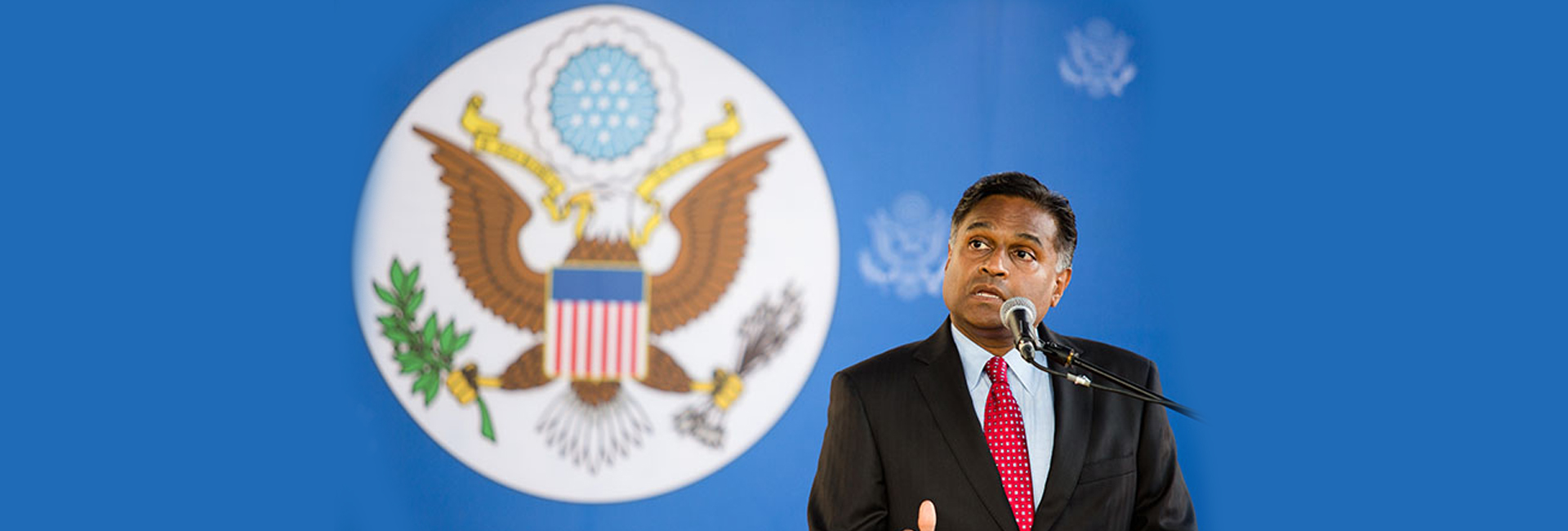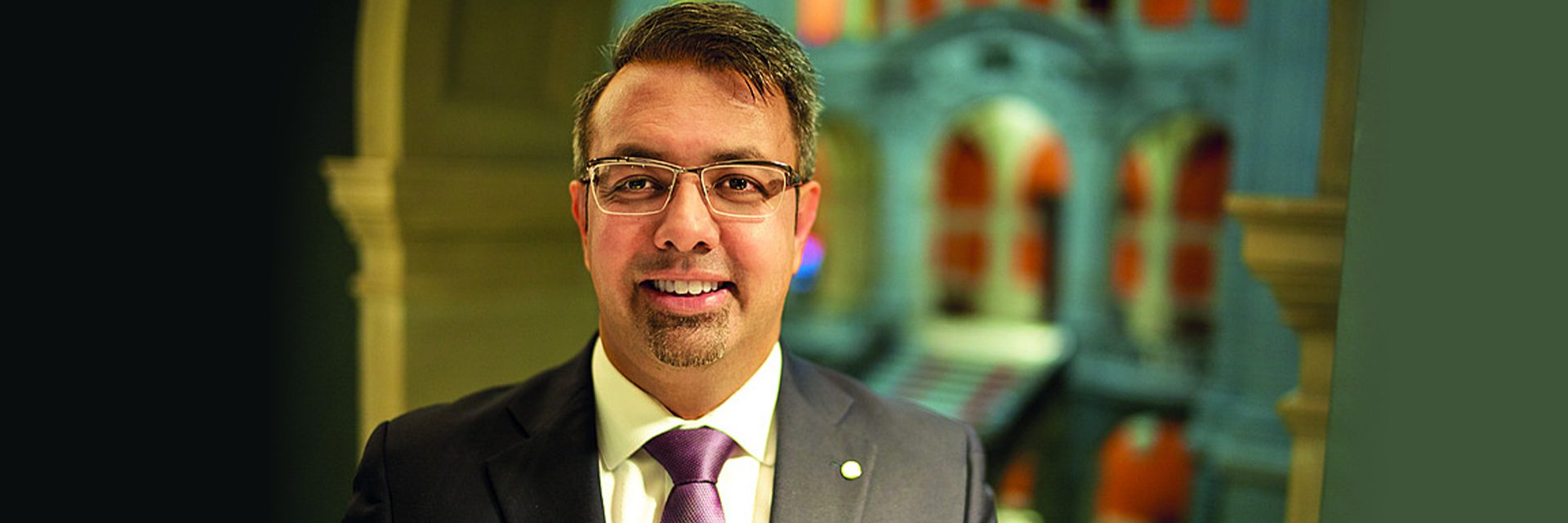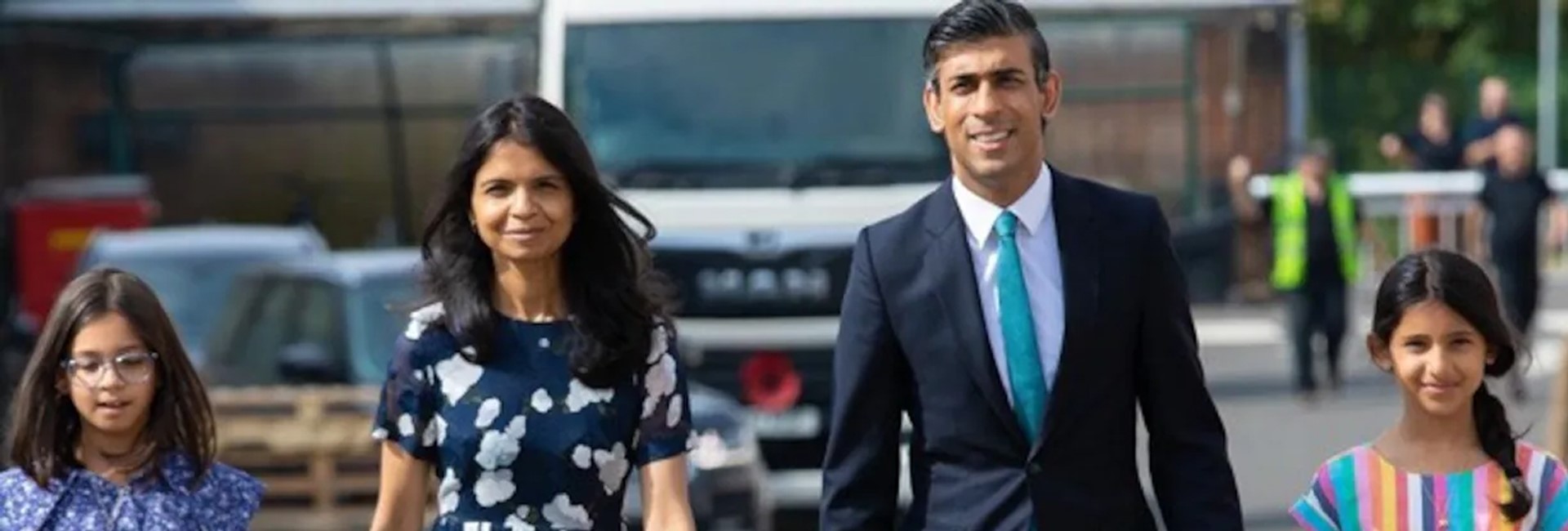(November 2, 2022) Once upon a time, a young man with a master’s degree in chemistry landed on the shores of New York. A native of Vadodara in Gujarat, the man – like million others – dreamt of making a life for himself and his family in this land of opportunities. While the first year was quite a challenge for the young Indian immigrant, he persisted and found a good job. After working for four years, he had saved enough to call his family – a wife, two daughters, and a son – from Vadodara to the United States of America. But our story is not about this man. It is about his four-year-old son, who was enchanted by this big new world his father brought him to and decided to make the most of it. His name, Gautam A. Rana – the current United States Ambassador to Slovakia.
“About a decade after my family shifted to the USA, my relatives also moved here. While I am a very proud American, I haven’t lost touch with my roots. My family and I have always maintained our Indian identity and are very proud of our Indian heritage,” shares the Ambassador, as he connects with Global Indian from Bratislava.

Ambassador Gautam A. Rana with former US President, Barack Obama
A lawyer by profession, Gautam is a career member of the Senior Foreign Service, class of Counselor, and has served at various US embassies. The diplomat served as the Special Assistant to the Deputy Secretary of State, Special Assistant to the Assistant Secretary of State for European and Eurasian Affairs, and the Political Advisor for the Provincial Reconstruction Team in Khost, Afghanistan. He was even posted as the Director for Afghanistan and Pakistan on the National Security Council staff and the Deputy Minister Counselor for Political Affairs at the U.S. Embassy in New Delhi. Before assuming the post of US Ambassador to Slovakia – for which he was nominated by President Joe Biden – he served as the Deputy Chief of Mission of the U.S. Embassy in Algeria.
The land of opportunities
After earning a master’s in chemistry, Gautam’s father decided to move to the USA, in search of better career opportunities in 1970. Only about six months old then, Gautam was completely unaware of how his father’s journey was going to shape his own journey in the future. “I was born in Baroda (now Vadodara). And when I was just a small baby, my father decided to take a chance and move to the USA. At the time, the US Embassy in Mumbai was giving visas to people with a master’s degree. And that is how he landed in the US,” the Ambassador says.

While his father got the visa and moved to the US, his initial days in the country were not exactly rosy. “Even though my father had a master’s degree, he didn’t come from a very wealthy background. So, when he arrived in New York City, he only had $20 in his pocket. In his first year in New York, he worked at minimum wage jobs. In fact, he worked at 12 different places in the first year – since all of them were minimum-wage jobs, he moved from one job to the other. Eventually, he landed a decent job, and in 1973, along with my mother and two sisters, I came to the US,” he details.
I think that the Indian diaspora in the United States of America has a lot of reasons to be proud of themselves. There are so many people of Indian lineage who are in decision-making positions now in the USA, including the Vice President, Kamala Harris.
Growing up in New Jersey, amongst a huge Indian diaspora, Gautam shares that his family would visit India almost every year during the festive season. “I have many fond memories of India from my childhood,” he says, adding, “My family would travel home for every Navaratri and Diwali. We would do the garba and eat loads of delicious food.” Speaking about his childhood days, the diplomat shares, “I grew up in a suburban area, amidst a very supportive community. We never encountered any kind of racism or bullying.”

Ambassador Rana with President of Slovakia, Zuzana Čaputová
While most Indian kids, who moved to the USA, battled only the cultural shift, Gautam had other challenges to face. “I suffered from polio when I was just five months old in India. I think that was part of the reason why my parents wanted to move to the USA. I have walked with crutches since a young age. And while I have never faced any discrimination for my disability, it is the expectations of other people that have been a challenge for me. Many times, I – and I think many other disabled people – struggle with what other people perceive and what we can and cannot do. This includes when we apply for jobs, or houses, even when we try to fetch a cab. I never wanted to limit myself to other people’s perception of what I can do in life, and that has been the greater challenge for me,” the Ambassador says.
Climbing the diplomatic ladder
Like most other Indians, Gautam’s parents too emphasised on the importance of good education. “My sisters and I were very focussed on doing well in school. I remember my father would always tell me that good education is your ticket to the world. My sisters pursued a degree in medicine, and I went to the University of Pennsylvania to earn a BA and BS,” he shares. Having always been fascinated by the legal profession, the Ambassador decided to enroll at the Vanderbilt University School of Law after working for a few years. “I have been very interested in social justice and inspired by Mahatma Gandhi, I earned a Doctor of Jurisprudence from Vanderbilt in 1997.”

However, it was the foreign policy that interested Gautam the most, and which led him to join the US Foreign Service. He earned a MA from the National Defense University, College of International Security Affairs, and is the recipient of multiple State Department performance awards and a U.S Department of Defense Honor Award. Soon after joining the Foreign Services, Gautam was posted to the US Embassies in Jordan, Egypt, and Syria between 2006 and 2008. Subsequently, he served in several US embassies, including Kabul, Ljubljana, and Algiers.
The progress that the US and Indian relations have made, especially in the last 10 years, is incredible. The representatives from USA and India have been working very closely to better the relationships further. And the immense growth of the Indian diaspora in America has certainly helped that cause.
A proud Indian-American, Gautam shares that the diaspora has grown from being just immigrants to holding important positions in various spheres of the country. “I think that the Indian diaspora in the United States of America has a lot of reasons to be proud of themselves. There are so many people of Indian lineage who are in decision-making positions now in the USA, including the Vice President, Kamala Harris. But that is the story of America. People who have come to this land, and have worked hard, have been able to achieve so much in the USA. I think Indian Americans will continue to reach great milestones.”
The Ambassador, who served as the Foreign Service Office at the New Delhi US Embassy between 2011 and 2014, feels that the US-Indian diplomatic relation has taken off in the last few decades. “The progress that the US and Indian relations have made, especially in the last 10 years, is incredible. When Prime Minister Modi had come to the USA during his first term, I was working at the White House, President Obama hosted a state dinner and several things were discussed during that meeting. The representatives from USA and India have been working very closely to better the relationships further. And the immense growth of the Indian diaspora in America has certainly helped that cause,” he says.

Ambassador Rana with his family
Currently stationed at Bratislava with his wife and two kids, Gautam is heading the US convoy to the land of the Slavs. While he hasn’t been able to visit India since he moved back in 2014, he wishes to bring his boys to the country he was born in, someday. “Slovakia is a beautiful country and we are loving it here. I don’t get much time off from my very busy schedule, I try to spend as much time with them as possible when I am free – especially because my boys are just eight and five years old. I think they would love India and I plan to take them there very soon,” shares the Ambassador, who still speaks fluent Gujarati.
- Follow Gautam A. Rana on LinkedIn





a great heartwarming success story. mr. rana seems to be a determined caring man with a nice family with great values.